Nano-silica particles enhanced adsorption and recognition of lysozyme on imprinted polymers gels
ZHAO Wen-tao(赵文涛), XUE Bin(薛彬), CHEN Zhen-he(陈振贺) , YANG Shu(杨戍), ZHANG Xin(张鑫),SUN Li-quan(孙立权), LUO Ai-qin(罗爱芹),
(1.School of Life Science, Beijing Institute of Technology, Beijing 100081, China;2.Agilent Technologies (China) Co., Ltd, Beijing 100102,China;3.Municipal Research Institute of Environmental Protection, Beijing 100037, China)
Nano-silica particles enhanced adsorption and recognition of lysozyme on imprinted polymers gels
ZHAO Wen-tao(赵文涛)1, XUE Bin(薛彬)2, CHEN Zhen-he(陈振贺)3, YANG Shu(杨戍)1, ZHANG Xin(张鑫)1,SUN Li-quan(孙立权)1, LUO Ai-qin(罗爱芹)
(1.School of Life Science, Beijing Institute of Technology, Beijing 100081, China;2.Agilent Technologies (China) Co., Ltd, Beijing 100102,China;3.Municipal Research Institute of Environmental Protection, Beijing 100037, China)
Molecular imprinting technology has a great potential to be used in protein separation and purification. In this work, lysozyme imprinted polyacrylamide gel was prepared with silica particles as a sacrificial template to generate macro-porosity for fast adsorption. The adsorption equilibrium time and adsorption capacity were 9 h and 56 mg/g respectively, which was 2 h less and 2.3-fold more than polymers without the sacrificial template. In order to test molecular imprinting polymers (MIPs)’selectivity, bovine serum albumin (BSA) was chosen as interferent for binary adsorption tests. In addition, the adsorption selectivity was further investigated using different molar ratios of lysozyme to BSA with fixed total concentration of proteins, as well as using various total concentrations of proteins with an equimolar ratio of lysozyme to BSA. It has been proven that the total concentration of proteins should be larger than 1.5×10-7mol/mL, when the molar ratio of BSA to Lyz is 1∶1, in order to effectively separate Lyz from the binary protein mixture. The macro-porous lysozyme molecularly imprinted polymers have less adsorption time, larger adsorption capacity, and better imprinting effect.
lysozyme; silica; molecular imprinting; macro-porous polymers; adsorption kinetics
Protein molecular imprinting has been focused on the preparation of highly selective materials for target proteins. The dominating mechanism is similar to an antigen-antibody stereo-complementary interaction, and the imprinted polymers have a specific affinity towards templates[1]. Protein imprinting shows a great potential to be used in the field of protein separation, purification and enrichment, medical diagnosis, drug development, membrane sensors, etc[2].
An important strategy to decrease “buried” imprinting sites was the application of “sacrificial template” (different from the imprinted template and used to generate macro-pores in polymers). After the sacrificial template removal, macro-pores were left to improve the availability of the imprinting sites. Macro-porous silica and silicon dioxide were reported to be used as sacrificial templates with the advantage of low-cost[3-4].
In this study, nano-silica particles with a diameter of 359 nm were used as the sacrificial templates for preparing lysozyme imprinted polymers. The application of uniform round silica could introduce more uniform macro-pores than with macro-porous silica or silicone dioxide, which is of benefit for sorption-desorption kinetics. In addition, small pieces of polymer gel with size of 0.03 cm3were used as adsorbents, which avoided the destruction of binding sites by polymer crushing.
1 Experimental
1.1 Reagents
Lysozyme (Lyz, Mw=143 00, pI=11.0, Ultrapure), Albumin Egg (OVA, Mw=45 000, pI=4.7, Ultrapure) and Bovine serum albumin (BSA, Mw=66 000, pI=4.9, Ultrapure) were purchased from Beijing Leber Hess Biotechnology Company. Acrylamide (AAm, Analytical Pure), Tianjin Chemical Reagent Research Institute. N,N′-methylenebisacrylamide (MBA, Analytical Pure), Ammonium Persulfate (APS, Analytical Pure), Ethanol (Analytical Pure) and Tetraethyl silicate (TEOS) were purchased from Beijing chemical reagent company. N, N, N′, N″-tetramethylethylenediamine (TEMED) was purchased from Beijing Mengyimei Biotechnology Company. SDS was purchased from Xi Long Chemical Company. Acetonitrile (Chromatography pure) was purchased from Amthyst Chemicals.
1.2 Preparation of molecularly imprined polymers with silica particles as sacrificer
The mono-disperse silica particles were synthesized usingthe Stöber method according to Hu’s work[5]. Molecularly imprinted polymers (MIPs) were prepared by reacting AAm (0.48g) and MBA (0.12g) in 4mL of TEMED (0.05%, PBS, 10 mM, pH6.2) solution, which is denoted as system 1; Lyz (0.12 g) was dissolved in 4mL of APS solution (2 mg/mL) with 0%, 0.01%, 0.05%, and 0.1% silica, respectively, which is system 2. The two systems were mixed together and purged for 1 min to remove oxygen and then polymerized at 30 ℃ for 12 h. Non-imprinted polymers (NIPs) were prepared in the same way, but without addition of templates. The polymers are named according to the amount of the silica sacrificer in system 2. For instance, 0.05%MIP and 0.05%NIP denotes polymers with the silica sacrificer, and 0%MIPs and 0%NIPs denotes polymers without the silica sacrificer.
In one of our previous studies, the polymer compositions (containing 0.05% silica, denoted as 0.05%MIPs and 0.05%NIPs) and the adsorption conditions had been optimized, including pH (6.2), the ratio of adsorption volume and weight of wet polymer (7∶1, mL/g). Thus in this work, previously optimized conditions were used, except for the swelling ratios and the rebinding kinetics, which were re-evaluated. The swelling ratios are 21.7 and 23.0 for MIP and NIP, respectively, which are closely coincidental with the last report. The stability of the polymer preparation and post-treatment method were proven to be stable.
1.3 Template and sacrificer removal
The MIPs and NIPs were cut to small pieces with size around 0.03 cm3. After silica etching with 1% HF for 24 h, the polymers were washed with distilled water 6 times and each time for 8 h to fully remove HF. Then polymers were washed by acetic acid/SDS (10 %vol, 10 %wt) for 12 h, repeated 3 times to remove the template, and thoroughly washed by distilled water continuously for one week to fully remove acid and SDS. All washings were carried out in a shaker at 25 ℃. UV-spectrophotometer (UV-1100) and pH meter were used to monitor the washing solution to make sure there was no adsorption of proteins at 280 nm and no pH difference between the supernatants and pure water. The polymers were kept in pure water at 4 ℃ in the refrigerator for further experiments.
1.4 Adsorption amount and imprinting factor
The swelling ratios of MIP and NIP polymers were evaluated to calculate the binding capacities, which has been measured acording to Zhao’s work[6]. After drying with a piece of filter paper to remove surface water, 0.5 g polymers were incubated with 3.5 mL protein solutions (pH6.2, 10 mM phosphate buffer) in a 10 mL centrifuge tube and shaken at 25 ℃ for 9 h. The free concentration of proteins was measured by UV-spectrophotometer at 280 nm. The adsorption amount (Q, mg protein/g polymer) was calculated according to following equation
(1)
whereC0(mg/mL) is the initial protein concentration,Cf(mg/mL) is the final protein concentration,V(mL) is the total volume of the adsorption solution andmis the mass of polymer calculated from the swelling ratio.
Imprinting factor (IF) was defined as a binding capacity ratio of MIP to NIP.
IF=QMIP/QNIP
(2)
whereQMIPandQNIPare binding amounts of MIP and NIP, respectively.
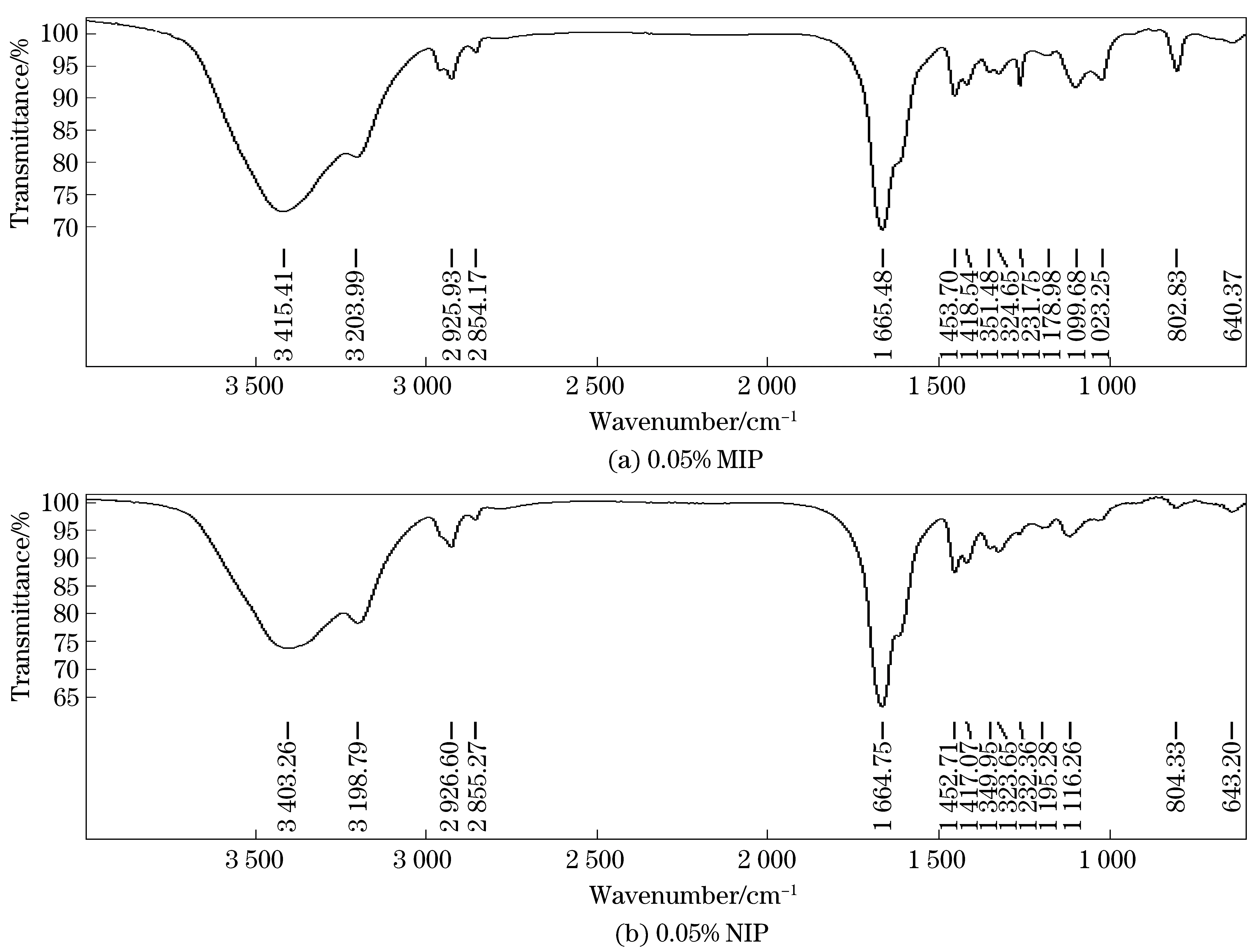
Fig. 1 FTIR spectra of 0.05 %MIP and 0.05 %NIP
1.5 Chromatography evaluation for binary adsorption
The supernatants were analyzed by HPLC (Waters®515-717-996 system) with a C18 reverse column (150×4.6 mm, 5 μm, Fuji). The gradient procedure is as follows: from 35%A to 45%A within 5 min and 45%A for 2 min, from 45%A to 50%A within 3 min, 50%A for 5 min with flow rate of 0.8 mL/min. Several parameters were calculated from chromatography data: adsorption percentage (E), distribution coefficient (D), selectivity coefficient (S) and relative selectivity coefficient (Sr)[7].
(3)
D=(C0-Cf)/Cf
(4)
S=DTem/DInt
(5)
Sr=SMIP/SNIP
(6)
whereDTemandDIntare distribution coefficients of Lyz and BSA.SMIPandSNIPare selectivity coefficients of MIP and NIP.
2 Results and discussion
2.1 FTIR and surface morphology
Fourier transform infrared spectroscopy (FTIR) was used (Bruker Vetex) to prove the efficient removal of the silica sacrificer. Neither 0.05%MIPs nor NIPs have strong peaks in the range of 1 090-920 cm-1, which are typical vibration of Si—O bond (Fig.1).
Fig.2 shows the surface morphology of 0.05 %MIPs and 0.05 %NIPs. Clearly, porous sponge-like structures are dominant in these materials after freeze-drying[8]. By comparing the SEM data of 0.05% MIPs with 0.05% NIPs (Fig.3 A-1 and B-1), the porosity and morphology of MIPs and NIPs have significant differences. At low magnification (×200), porous sponge-like cavities of MIPs are more numerous than that of NIPs’, and the cavity diameter of MIPs is smaller than that of NIPs’. These phenomena can be attributed to the formation of imprinting sites by the template. At high magnification (×10 000), the surface of MIPs is more rough than that of NIPs. MIPs and NIPs all have some holes of 1 μm, which are formed by the removal of the silica template (d=359 nm) and later enlarged by freeze-drying.
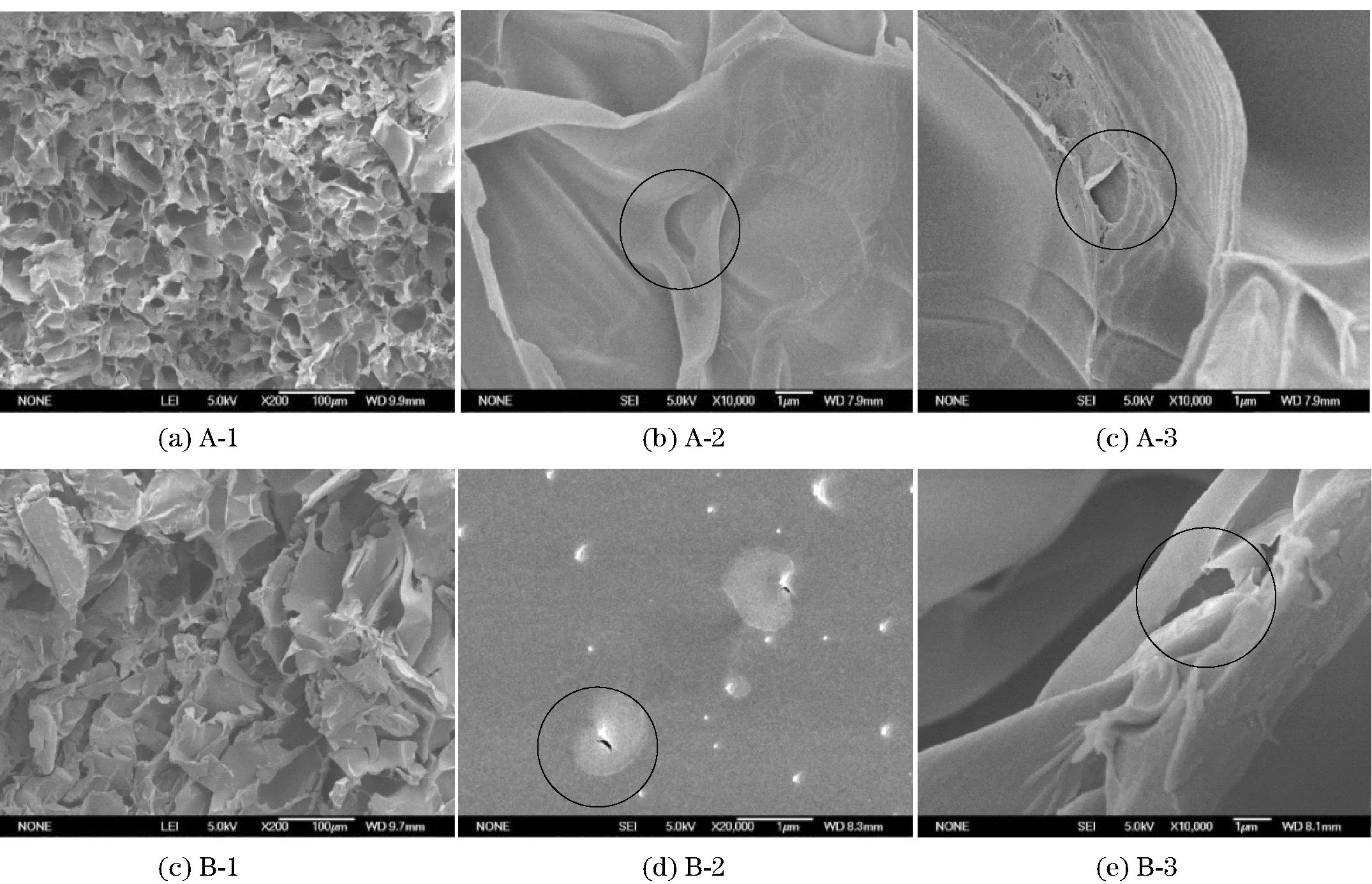
Fig.2 Surface morphology of 0.05 %MIPs(A-1-A-3)and 0.05 %NIPs(B-1-B-3)
2.2 Kinetics study
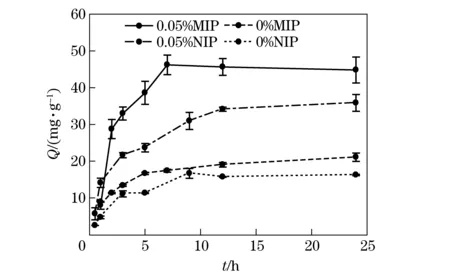
Fig.3 Binding kinetics of polymers with or without the silica sacrificer ([Lyz]=2 mg/mL, pH6.2 phosphate buffer)
0%MIPs and 0%NIPs, denoting polymers without the silica sacrificer, were prepared to reveal the effect of the silica sacrificer on the binding kinetics of polymers (Fig.3). For 0.05%MIPs and 0.05%NIPs, a faster binding kinetics was observed in the first part, compared to those without the silica sacrificer. For ease of application, all polymers were used in the form of monolith (circa 0.03 cm3). Therefore, both 0% MIPs and 0% NIPs needed much longer equilibrium time (12 h), because they possessed poor porosity and less available imprinting sites. After the surface binding sites are saturated with Lyz, the binding sites inside the polymers begin to play a role in the kinetics. The porosity created by the templates of 0.05%MIPs leads to a faster adsorption rate and a less equilibrium time than those of 0.05%NIPs (9 h for MIPs and 5 h for NIPs). The equilibrium time is shorter than the value reported in Yuan’s[11]and Ran’s[12]works. Finally, when all binding sites are occupied by Lyz, both 0.05%MIPs and 0.05%NIPs reach equilibrium, but with a higher adsorption platform for 0.05%MIPs, which demonstrates significant imprinting effects.
2.3 Binding isotherms
In order to study the imprinting effect of MIPs, the adsorption isotherms of the MIPs and NIPs were studied in the concentration rangeof 0.05-5 mg/mL (Fig. 4). The binding isotherm was fitted well using the Freundlich model (Q=aCm) and its parameters are shown in Tab. 1. Here, a is a measure of the capacity and the average affinity, while m represents the heterogeneity index and ranges between 0 and 1[9]. In this study, the 0.05%MIP, as expected, showed lower value of m for the binding of Lyz, which indicates a higher percentage of high affinity binding sites.
On the other hand, the higher value of m for the adsorption of Lyz in 0.05%NIP indicates a higher amount of homogeneous material with a higher percentage of low-affinity binding sites.
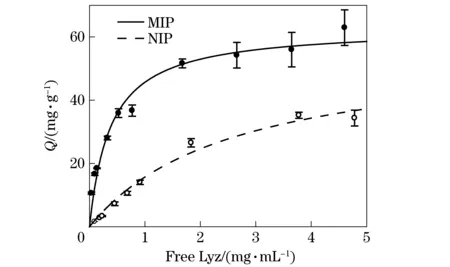
Fig. 4 Binding isotherm for 0.05%MIP and 0.05%NIP

Tab. 1 Parameters for Freundlich model
The binding dissociation constant of 0.05%MIPs is lower than that of 0% MIPs, and the maximum adsorption capacity of 0.05%MIPs is higher than that of 0% MIPs, which demonstrates that the addition of nano-silica particles increased porosity and more imprinted binding sites inside the imprinted polymer are exposed. Thus the affinity of MIPs to template molecules is enhanced and the adsorption capacity is increased.
In our work, the binding capacity of 0.05% MIP is 46.2 mg/g, which is more than reported by Qin[10]and Yuan[11](5.9 mg/g and 22 mg/g). Chen[12]and Wang[13]fabricated MIPs with larger binding capacity (249 mg/g and 94.8 mg/g), but the NIPs’ binding capacity was also bigger. In other words, silica nanoparticles help to expose 26.2% more imprinting sites. This effect can also be proven by the fact that the binding capacity of 0.05%NIPs is larger than that of 0% NIPs.
2.4 Selectivity to different proteins
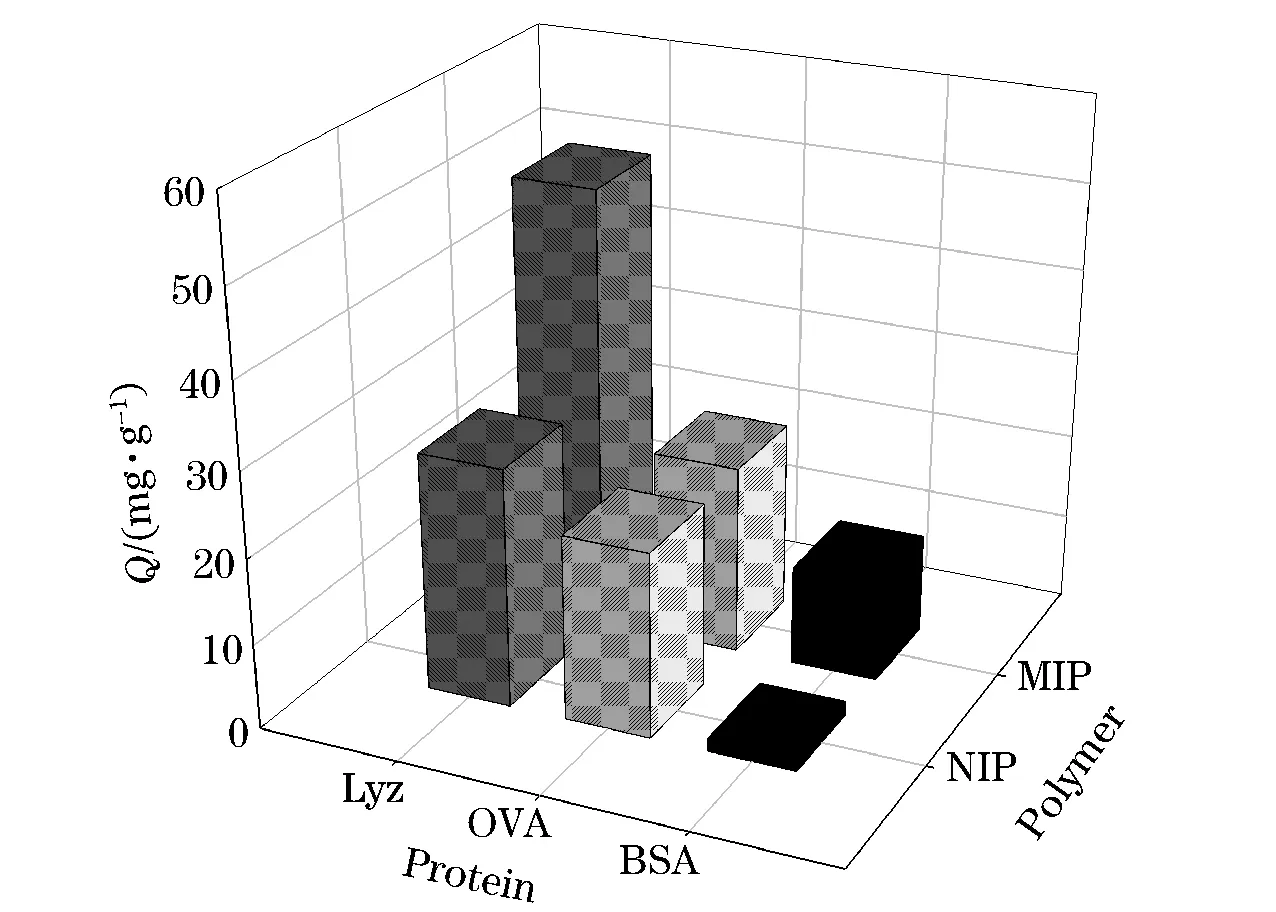
Fig.5 Adsorption capacities of 0.05%MIP and 0.05%NIP to pure Lyz, BSA and Egg Albumin
BSA and Egg Albumin were used as interferents to evaluate the selectivity of 0.05% MIPs. As shown in Fig.5, the adsorption capacity of 0.05% MIPs to Lyz is higher than that of BSA and Egg Albumin, which shows a selective affinity to Lyz. According to the data obtained from the NCBI, the molecular sizes of BSA (Mw=67.0 kDa) and OVA (Mw=45.0 kDa) are larger than that of Lyz (Mw=14.3 kDa). The access of proteins to the imprinting sites is blocked by the polyacrylamide network and the obstruction increases with the increase in molecular size/weight[14]. Consequently, it can be deduced that the adsorption capacity of 0.05%NIPs to Lyz is comparable with that of Egg Albumin, but higher than that of BSA. The affinity of 0.05%NIPs to Lyz, Albumin Egg and BSA is based on a non-specific interaction. The availability of non-specific binding sites determines the adsorption capacity according to molecular size, which produces resistance.
2.5 Separation of Lyz-BSA binary system
Lysozyme is widely found in Bacillus subtilis, Egg white, latex, saliva, tears, and many organs in human beings[15]. The interaction of lysozyme with nature impurities is a major problem in separation and purification process. In order to apply MIPs for the separation and purification of lysozyme from raw materials, the Lyz-BSA binary system was designed to evaluate the adsorption selectivity of 0.05%MIPs under different interferential protein concentrations.
Firstly, the effect of protein concentration was investigated to evaluate the seaparation efficiency of 0.05% MIPs (the ratio of Lyz to BSA, 1∶1). As shown in Fig. 6,while the total concentration of protein increases from 1×10-7to 3×10-7mol/mL,the adsorption capacity for Lyz increases gradually, whereas the adsorption capacity for BSA initially decreases from 1×10-7to 1.5×10-7mol/mL and then increases slowly. The adsorption behavior for BSA can be explained by the fact that at low total concentration the binding sites are not saturated with Lyz and the vacant sites are taken up by BSA. When more Lyz is introduced, the strong affinity of binding sites to Lyz forces BSA to leave the cavities. Finally, when the total concentration increases, a small increase of adsorption capacity is observed. There are two explanations for this small increase: the increase of BSA concentration may force the adsorption equilibrium with 0.05%MIPs to be shifted to the right or there may be a weak affinity between BSA and Lyz, and when the total concentration is very high, the influence becomes obvious enough. Thus two conclusions can be speculated: ① the 0.05%MIPs has much stronger affinity to Lyz; ② the interferential protein BSA has no or very low affinity to Lyz. Taken the adsorption data of 0.05%NIPs into account, selectivity and relative selectivity parameters are calculated and summarized in Fig. 6. The highest value of the relative selectivity can be obtained at the total concentration of 1.5×10-7mol/mL. When the total concentration is lower than 1×10-7mol/mL, the selectivity of 0.05% MIPs and 0.05% NIPs are nearly the same, due to the relative selectivity of 1.18. In other words, there is almost no specific interaction to be observed. Therefore, when the molar ratio of BSA to Lyz is 1∶1, the total concentration should be larger than 1.5×10-7mol/mL, and Lyz can be effectively separated from the BSA-Lyz mixture by 0.05% MIPs.
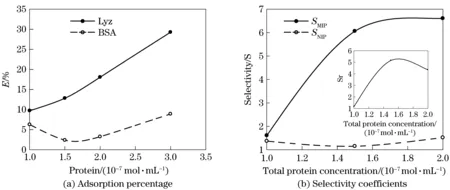
Fig. 6 Adsorption percentage and selectivity coefficients of polymers with 0.05% silica sacrificer
Further experiments were carried out to determine relative selectivity with increasing competitive protein percentages. Briefly, the total molar concentration of protein was kept constantat 5×10-8mol/mL. Then, a competitive protein was added to the template protein solution to adjust competitive protein percentage, and MIPs or NIPs adsorption capacity for Lyz or competitive protein BSA were quantified. With the increase of competitive protein percentage, the static distribution coefficient (KD)[4]of MIPs to Lyz showed a gradual increasing trend and the percentage of Lyz adsorption for NIPs showed a decreasing trend (Fig. 7). When the ratio of Lyz to BSA was changed from from 1∶0 to 3∶2, the concentration of Lyz decreased, andKDof MIP to Lyz also decreased, indicating that the amount of the binding sites decreased and MIPs’ affinity to Lyz was weaken or suppressed. However, MIPs’ adsorption of BSA increased with the increase of the BSA percentage in the adsorption solution due to a weak and non-specific interaction, whileKDof MIPs to BSA also increased. Furthermore, the isoelectric point (pI) of Lyz is 11.0-11.2, the pI of BSA is 4.7, and when the pH of PB buffer is 6.2, Lyz is positively charged and BSA is negatively charged. When the ratio of Lyz to BSA was changed from 3∶2 to 1∶1, the electrostatic adsorption between BSA and Lyz causedKDof MIP to Lyz to increase again. Although MIPs had a large number of imprinted cavities,KDof MIPs to BSA was far less than that to Lyz. This is because Lyz is much smaller than BSA in size (Lyz, Mw=14 300, BSA, Mw=66 000), thus the size of formed imprinted cavities is close to Lyz and much smaller than BSA. As a result, BSA can’t easily access the imprinted cavities, which results in much largerKDof MIPs to BSA. In a word,KDof MIPs to Lyz was dependent on both specific and non-specific adsorption. With the increase of competitive protein BSA percentage in the binary protein solution, the MIPs’ specific adsorption to Lyz decreases, but the non-specific adsorption increases. However, due to the limitation of imprinted cavities’ size, specific adsorption is stronger than non-specific adsorption. Thus, considering the specific and non-specific adsorptions’ behavior, the lower the BSA percentage in the binary protein solution, the better the selectivity of MIPs.
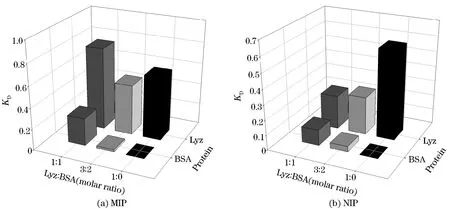
Fig.7 Influence of protein ratio to MIPs’ and NIPs’ adsorption
As for NIPs, with the decrease of Lyz percentage and increase of BSA percentage,KDfor Lyz showed a gradual decrease, andKDfor BSA increased, as shown in Fig.7. Because the NIPs didn’t have the imprinted cavities, which could adsorb Lyz specifically, it adsorbed Lyz and BSA by non-specific adsorption. With the increase of protein concentration in the solution, non-specific adsorption increased gradually until a balance is reached. Thus when the ratio of Lyz to BSA was changed from 1∶0 to 1∶1,KDof NIPs to Lyz decreased with the Lyz concentration,KDof NIPs to BSA increased with the BSA concentration. That is to say,KDs of NIPs to Lyz and BSA are mainly affected by the initial concentration of the two proteins due to non-specific adsorption.
3 Conclusions
Lysozyme imprinted polyacrylamide polymers were prepared with silica as sacrificial templates to improve the dynamic characteristics of polymer monolith (0.03 cm3). It was proven by the mercury porosimetry that two kinds of pores (1 μm and more than 10 μm) were formed. The adsorption equilibrium time and adsorption capacity were 9 h and 56 mg/g, respectively, which was 2 h less and 2.3-fold more compared to the polymers without the sacrificial template. Further, a binary protein adsorption model was carried out and adsorption conditions were optimized. The selective separation ability of 0.05%MIPs was verified, and it was shown that when Lyz was effectively separated from the BSA/Lyz mixture with an equimolar ratio of BSA to Lyz, the total concentration should be larger than 1.5×10-7mol/mL. This study paves the way for the application of MIPs in protein separation and purification.
[1] Wulff G. Molecular imprinting in cross-linked materials with the aid of molecular templates a way towards artificial antibodies[J]. Angewandte Chemie International Edition, 1995, 34: 1812-1832.
[2] Jing T, Xia H, Guan Q, et al. Rapid and selective determination of urinary lysozyme based on magnetic molecularly imprinted polymers extraction followed by chemiluminescence detection[J]. Analytica Chimica Acta, 2011, 692: 73-79.
[3] Yilmaz E, Ramström O, Möller P, et al. A facile method for preparing molecularly imprinted polymer spheres using spherical silica templates[J]. Journal of Materials Chemistry, 2002, 12: 1577-1581.
[4] Liu Q, Gai Q, He X, et al. Selectively enrichment lysozyme by composite molecularly imprinted polymer system[J]. Chemical Journal of Chinese Universities, 2008,29(3):505-509. (in Chinese)
[5] Hu X, An Q, Li G, et al. Imprinted photonic polymers for chiral recognition[J]. Angewandte Chemie International Edition, 2006, 45: 8145-8148.
[6] Zhao K, Cheng G, Huang J, et al. Rebinding and recognition properties of protein-macromolecularly imprinted calcium phosphate/alginate hybrid polymer microspheres[J]. Reactive and Functional Polymers, 2008, 68: 732-741. (in Chinese)
[7] Yu S, Luo A, Biswal D, et al. Lysozyme-imprinted polymer synthesized using UV free-radical polymerization[J]. Journal of Talanta, 2010, 83(1):156-161.
[8] Rushton G T, Karns C L, Shimizu K D. A critical examination of the use of the freundlich isotherm in characterizing molecularly imprinted polymers (MIPS)[J]. Analytica Chimica Acta, 2005, 528: 107-113.
[9] Yu Y, Duan Y, Cui Y. Advances on freeze-drying technology of protein drug[J]. Acta Academiae Medicinae CPAF, 2010,19(1):78-80. (in Chinese)
[10] Qin L, He X, Jia M,et al. A thermosensitive monolithic column as an artificial antibody for the on-line selective separation of the protein[J]. Journal of Chemistry: a European Journal, 2011,17:1696-1704.
[11] Yuan S, Wang S, Deng Q, et al. Fabrication of bovine serum album in imprinted polymer on silica surface and its molecular recognition function[J]. Journal of Modern Food Science and Technology, 2013,29(1):134-137.
[12] Chen Z, Hua Z, Xu L,et al. Protein-responsive imprinted polymers with specific shrinking and rebinding[J]. Journal of Molecular Recognition, 2008,21:71-77.
[13] Wang X, Dong S, Bai Q. Preparation of lysozyme molecularly imprinted polymers and purification of lysozyme from egg white[J]. Journal of Biomedical Chromatography, 2014,28:907-912.
[14] Gai Q, Qu F, Liu Z-J, et al. Superparamagnetic lysozyme surface-imprinted polymer prepared by atom transfer radical polymerization and its application for protein separation[J]. Journal of Chromatography A, 2010, 1217: 5035-5042.
[15] Zhao C, Kan Z. New technology to extract Lysozyme[J]. Life Science Instruments, 2007,5:36-37. (in Chinese)
(Edited by Wang Yuxia)
10.15918/j.jbit1004-0579.201524.0423
O 652.6 Document code: A Article ID: 1004- 0579(2015)04- 0579- 08
Received 2014- 04- 10
E-mail: bitluo@bit.edu.cn
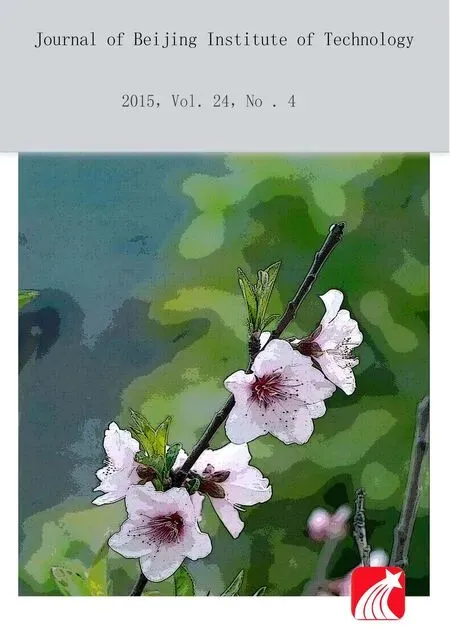 Journal of Beijing Institute of Technology2015年4期
Journal of Beijing Institute of Technology2015年4期
- Journal of Beijing Institute of Technology的其它文章
- Influence of shear sensitivities of steel projectiles on their ballistic performances
- Generalized ionospheric dispersion simulation method for wideband satellite-ground-link radio systems
- Multi-subpulse process of large time-bandwidth product chirp signal
- Factor-graph-based iterative channel estimation and signal detection algorithm over time-varying frequency-selective fading channels
- Similarity matrix-based K-means algorithm for text clustering
- Optimizing control of a two-span rotor system with magnetorheological fluid dampers
